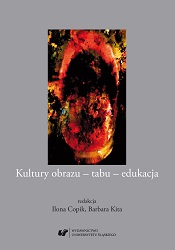Jest mur – nie ma muru, czyli niewidzialna granica w filmach Defy
The Wall – No Wall, or an Invisible Border in DEFA Films
Author(s): Andrzej Gwóźdź
Subject(s): Culture and social structure , Film / Cinema / Cinematography
Published by: Wydawnictwo Uniwersytetu Śląskiego
Keywords: DEFA films; Berlin Wall taboo; stranger; oppression
Summary/Abstract: The author points to the absence of the Wall in the film representations of Berlin – the capital of the GDR. If the Wall appeared in films (mainly in dialogues), it was tabooed as a symbol of a protective shield against the West, for instance in „And Your Love Too” („…und deine Liebe auch”, 1961) by Frank Vogel or „A Right to the Jaw” („Der Kinnhaken”, 1962) by Heinz Thiel. The absent iconography of the Wall was consistently supported by the construct of the enemy from behind the Wall – the inviolable figure of exclusion from both the political and the cultural order of the GDR. Still, even though in East Berlin locations the presence of the Wall used to be ignored, the underlying image of it often accompanied stories in films, like in „Generation 45” („Jahrgang 45”, 1965), Jürgen Böttcher’s shelved film. The strategy of tabooising the presence of the Wall was sporadically accompanied by the practice of ignoring its horror and making it mundane, for instance in the representations of the Brandenburg Gate as a monument that covers the Wall („Hostess”, 1975, by Rolf Römer). As late as in „The Architects” („Die Architekten”, 1990) by Peter Kahane – from the time of the breakthrough – the Brandenburg Gate appears along with the full spectrum of oppression of the architecture, which makes one realise the lack of communication between the eastern and the western parts of the city.
Book: Kultury obrazu – tabu – edukacja
- Page Range: 85-101
- Page Count: 17
- Publication Year: 2018
- Language: Polish
- Content File-PDF

